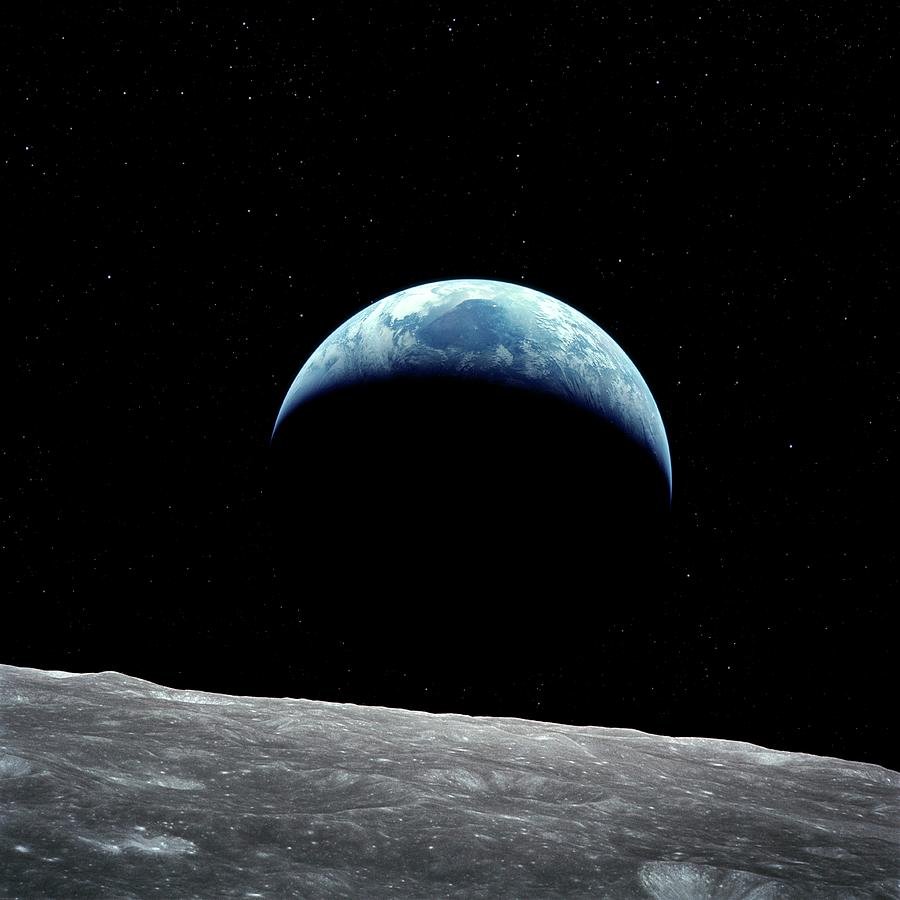Amazing design of our planet
Earth rise over the moon
Many people know some of the design features of our planet without which intelligent life would be impossible. These might be the distance of the planet to the sun and the tilt of the earth’s axis of rotation. I was shocked to learn that many other features, hundreds, also are required. Here is a small sampling of “just right” features, taken from Ross’s Improbable Planet (2017) and the online resource “RTB Design Compendium 2009.”
1. Surface gravity of our planet allows much of the ammonia and methane in the atmosphere to escape while retaining much of the water vapor. Methane and ammonia in too great a quantity are deadly to advanced life; water is essential. The molecular weights of the three gases are very similar: methane: 16.04246 g/mol; ammonia: 17.03052 g/mol water: 18.01528 g/mol;.[1] In other words the surface gravity of our planet is perfect within a very narrow range of optimal strengths.
2. Our earth-moon system regulates features of our planet that are essential for intelligent life.[2] Among the features the moon—at its proximity to earth and mass relative to the size of our planet—regulates are: tidal effects on the oceans, rotation of our planet, orbital obliquity, movement of nutrients and life from oceans to the continents, and our life-sustaining magnetic field. If the moon’s proximity and mass were any different, intelligent life would be impossible on our planet.
3. Our planet’s atmospheric pressure and transparency if much different we wouldn’t be here.
4. The luminosity of our sun, which has changed over the ages, has always been just right for the planet’s speciation at the time.
5. Our magnetic field’s strength and duration protects us from harmful radiation without being so strong as to create too-severe magnetic storms. It persists through the ages, unlike Mars’s field, which seems to have faded and no longer protects the surface of the planet. Our magnetic field’s strength and duration are created by a dizzying “just-right” combination of liquid metals and quantities at our planet’s core. They brush across one another with sufficiently low friction between them to permit them to continue generating the life-sustaining magnetic field that protects us now.
6. The tilt of our planet’s axis if much different our surface temperatures would be too great.
7. Our earth occupies eight “habitable zones” that all have to be finely tuned in order for advanced life to exist, persist, and thrive. Here they are, as recounted in Improbable Planet, pages 81-91:[3]
Liquid water
Ultraviolet
Photosynthetic
Ozone
Rotation-rate
Obliquity
Tidal
Atmosphere
I will stress again that the features listed in this blog post are not even close to being an exhaustive list of known features of the universe, the galaxy, the solar system, and the planet necessary for intelligent life. In “RTB Design Compendium (2009)” the authors list 140 features of the cosmos as a whole and an additional 402 “quantifiable characteristics of a planetary system and its galaxy that must fall within narrow ranges to allow for the possibility of advanced life's existence” (Ross, 2010).
The God who created our planet demonstrated that he is super intelligent, super powerful, and super caring, just as he is described in the Bible.
_______________________________
[1] g/mol stands for grams per mole. A mole is sometimes called “Avogadro’s number”; it is equivalent to 6.022 x 10^23 (Andre, 2012). Atomic weight is expressed in terms of the number of grams for one mole (6.022∙10^23) of atoms or molecules.
[2] Because our moon is so large relative to the mass of the earth, it sometimes is referred to as part of a two-planet system, the earth being the other planet. Referring to the earth-moon system as a two-planet system probably is not quite correct, though, since the center of gravity between the two bodies is located below the surface of the earth. Nonetheless, the proportionately huge size of our moon as compared with the relative sizes of other planets’ moons is remarkable. Compare, for example, the proportionate size of Ganymede and Jupiter.
[3] For details on why these zones all must converge in order for intelligent life to survive and thrive, please see the book, Improbable Planet.
_______________________________
This blog post is an excerpt from my soon-to-be-published book, Is Jesus Real? 5 Types of Evidence for Curious Sceptics & Believers
